In Castleisland today, there is little to remind of the magnificent thirteenth century Castle of the Island. A siege of this castle during the times of Maurice, First Earl of Desmond, took place in the 16th year of his earldom.
Maurice Fitzthomas Fitzgerald, son of Thomas – ‘The Ape’ – Fitzmaurice Fitzgerald, was created First Earl of Desmond in 1329:
On the 27th of August 1329, Edward III, reciting that he had promoted Maurice Fitz Thomas to the earldom of Dessemond, granted him the advowson of the church of Dungarvan and remitting all arrears of rent, gave him for life the rents of Dungarvan for which he was bound to pay 200 marks annually.1
Earlier that year, the earl had assembled an army of one thousand soldiers to aid the king, first attacking and subduing the O’Nolans, and taking the Castle of Ley, occupied by O’Dempsy.
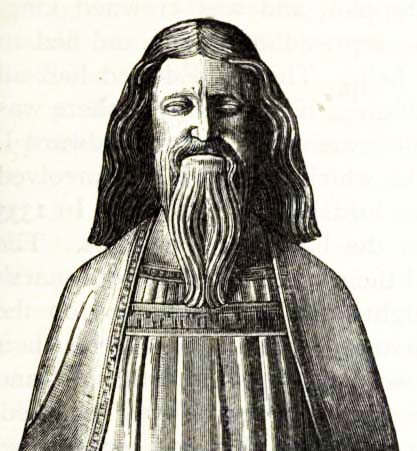
In 1331, Anthony de Lucy arrived in Ireland as viceroy. He seized the Earl of Desmond and other lords and imprisoned them on the suspicion that they were secretly aiding the Irish.
Maurice Fitz Thomas, Earl of Desmond, is taken by the Justiciary at Limerick, on the Assumption of the Virgin (August 15) and is brought to the Castle of Dublin.3
After being kept in prison for eight months, the earl was liberated in 1332 at the supplication of the clergy, magnates and commons of Ireland.
In 1333, the earl fell from his horse and broke his leg.4
In 1334, Edward III, to the chagrin of the exchequer, again waived the outstanding 200 marks rent of Dungarvan. In this year, Maurice also regained the liberty of Kerry.
In early 1335, Desmond led a campaign against Brian Ban O Briain; he knighted seven men near Grean, Co Limerick, at that time. Later in the year, the earl was summoned to attend the king in Scotland, and later on to assist him in his French wars:
On the 24th August 1335, Maurice Fitz Thomas, Earl of Desmond, had an order for £100 for himself and his men at arms, who came from Munster to Drogheda on their way to Scotland, and were detained there for a month from the want of shipping.5
In 1336, Maurice was granted custody of a portion of the temporalities of the Bishopric of Ardfert. The lands placed in Desmond’s custody were the manors of Ardagh, Rathondony and Killayne.6
In 1338, Desmond was granted the custody of the lands of Glanworth and Castletown, Co Cork, which lay close to his holdings in Mallow.7
In 1339, there was universal war through the whole of Ireland. In Kerry, two hundred Irish were killed by the Earl of Desmond and the other Geraldines, and Maurice FitzNicholas, Lord of Kerry, was taken by the earl and died in prison.8
In 1341, the earl was absent from a parliament held in Dublin:
In October a parliament at Dublin, to which the Earl of Desmond came not at all, at which time a division was first manifested between the English born in England and the Anglo-Irish, wherefore the Irish lords and magistrates constituted a parliament at Kilkenny for the good of the king and country … it is there concluded that the unjust government of Ireland by his ministers should be signified to the king by messengers with a complaint and petition for their correction and for better government.9
In 1343, the Dublin government dismissed Desmond’s claims to Inchiquin and seized the lordship.10 However, Desmond, with the advice of his council, re-entered the lordship just days after this seizure and reappointed his own men who proceeded to administer the lordship.
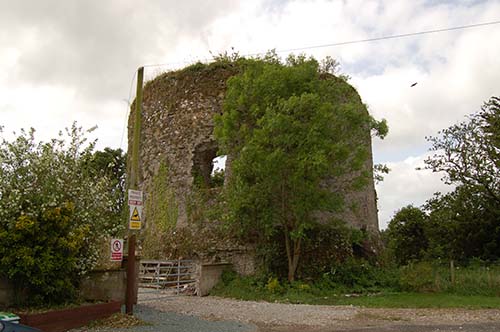
In 1344, the king summoned the Earl of Desmond to be at Portsmouth on the Octaves of the Nativity with at least twenty men at arms and fifty hobelars, who were to receive the king’s pay and who were to serve the king in his war with Philip of Valois, King of France.11 The king also ordered the custody of the Ormond lands to be returned to Desmond.
The Siege
In mid-July 1344, Ralph Ufford, the new justiciar, was in Ireland.12
He immediately attacked Desmond’s land claims and custody, and set out for Munster eight days after his arrival. In August, the justiciar ejected Desmond’s officers and appointed new officials in Inchiquin. He also transferred custody of the Ormond estates.
Early in 1345, Desmond attempted to call a meeting with the other Anglo-Irish magnates at Callan (Kilkenny) but Ufford forbade the meeting. Later that year, a parliament was held at Dublin to which Desmond did not attend:
After St John Baptist’s day (June 24), Ralph Ufford, with the king’s standard, without the consent of the lords, went into Munster against the earl where he seized his lands.
Ufford captured Askeaton Castle, and from there proceeded to Kerry.
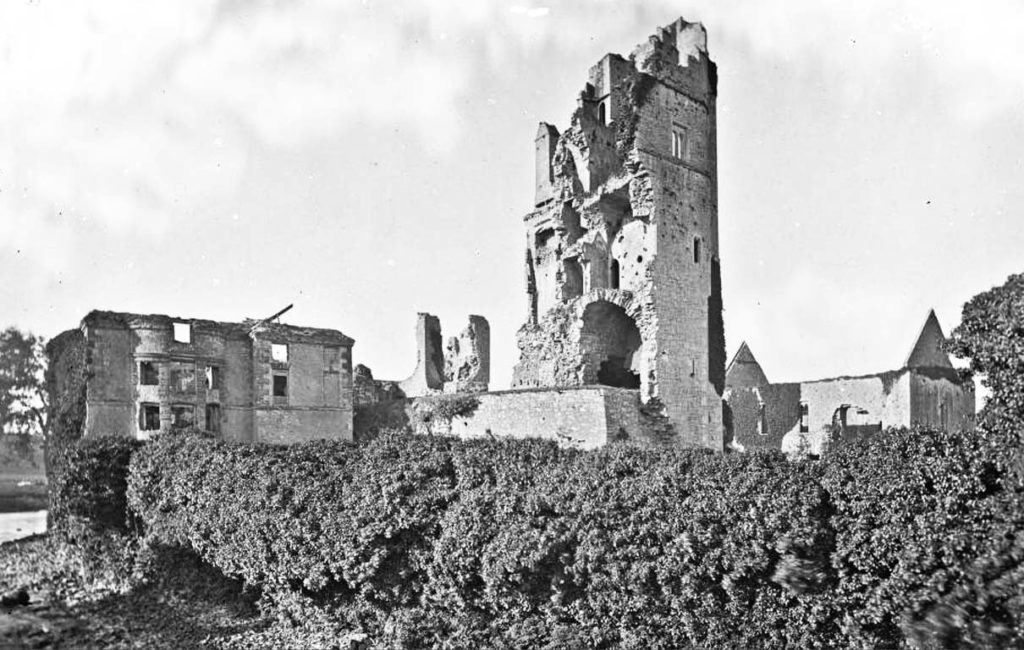
In Kerry, he attacked the castle of Castle Island, which offered a determined resistance, but after a fortnight’s siege, was forced to surrender.13 The earl’s knights, Sir Eustace de la Poer, Baron of Kenlis (Kells) in Ossory, and Sir William Grant, who defended the castle, were hanged.
The earl’s seneschal, John Coterel, was seized, and having been tried for various tyrannical acts and found guilty, he was hanged, cut down, and his intestines burned, his head severed from his body, and his limbs set up as a public example in different parts of the province.14
The capture of Castleisland signalled the end of Desmond’s revolt.15
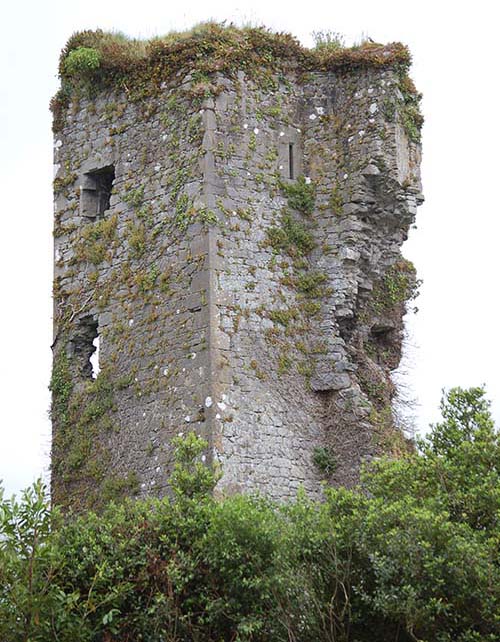
The Earl of Desmond, who was subsequently arrested, probably composed the following quaint and plaintive verses during this period:
I am alone, simple, and without comfort, Lordship bids me remain so that, I am cut off from my comfort, A wise man should seek his comfort in himself. I am not accustomed to remaining alone, Nor being morose with little comfort The best thing is to comfort oneself For whoever feels himself to be alone and without comfort.16
In 1346, a truce was granted to the Earl of Desmond. He sailed with his wife from Youghal to England where he prosecuted his complaint against Ralph Ufford. He was allowed by the king (from the time when he entered England) twenty shillings per day for his expenses.17
The Earl of Desmond remained in England in the custody of Sir William Trussel of Cublesdon (Kibblestone) until 18 February 1348 on which day he was liberated.18
He received a pardon from the king on 28 November 1349. He was granted back all of his lands and liberties and the issues of his lands since 1345 when they were seized from him.
Desmond returned to Ireland in 1350.
In 1351, the king issued a command that Desmond could only be arrested with a mandate from him (the king).
On 8 July 1355, a writ announced Desmond would be justiciar. His terms of service were £500 per annum paid quarterly in advance.
Desmond acted in this post for the months until his death at Dublin Castle on 25 January 1356.19 No parliaments were held during his brief term of office.
The Earl of Desmond was interred in the Abbey of Tralee.20
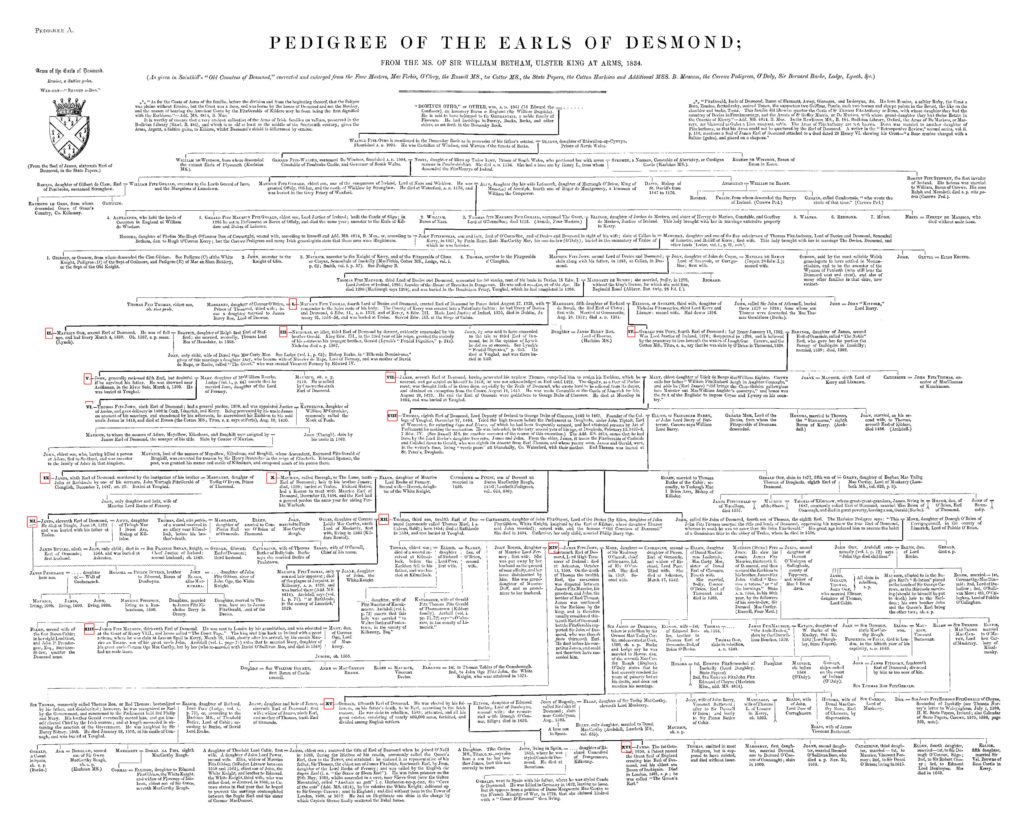
A visitor to Castleisland in the late eighteenth century recalled the great history of the castle of Castleisland and described its condition then:
The ruins of the castle are extensive and shew that it has been a place of great strength and consequence; the river Mang, here an inconsiderable stream, runs round the walls, and forms a dyke over which were drawbridges, defended by portcallices.21
Today, the ruin is much reduced, leaving little to recall the glorious times of Maurice, First Earl and Desmond, and the Desmond dynasty that followed.22
_____________
1 Annales Hiberniae (1842) by James Grace, edited by Rev Richard Butler, pp116-117. 2 Image from A Student’s History of England (1910) by Samuel Rawson Gardiner. 3 Annales, p123. 4 Annales, p129. 5Annales, p128. 6 Waters, Keith Alan (2004) The Earls of Desmond in the Fourteenth Century, Durham theses, Durham University. Available at Durham E-Theses Online: http://etheses.dur.ac.uk/2818/. 7 Ibid. 8 Annales, p133. 9 Annales, pp133-135. 10 The ruin of Inchiquin Castle lies in the townland of that name in the parish of Clonpriest, near Killeagh and Youghal, Co Cork. It should not be confused with Inchiquin Castle in Co Clare. 11 Annales, p136. 12 Annales, p135, gives the year of Ufford’s arrival as 1343: ‘Sir Ralph Ufford came as Justiciary with his wife, the Countess of Ulster; at his coming there began showery weather which did not stop as long as he lived.’ 13 ‘In the legal proceedings against Maurice fitz Thomas, he was often said to have been at Castleisland … Castleisland may have been the most secure Desmond fortification rather than the caput’ (Waters, p182). Further reference to the history of the castle, see ‘Castleisland Castle County Kerry’ at https://www.castleislandcastle.com/. 14 ‘Meanwhile the justiciary goes through Kerry to O’Conyl, and takes two of the earl’s castles by treachery, to wit, Iniskisty and Castle Island, in which last Eustace Poer, William Graunt and Sir John Cotrell were taken and hanged’ (Annales, pp137-139). 15 Waters. The castle of Castleisland would appear to have come into the possession of Desmond through the marriage of his grandfather. Some sources state that the earl’s second marriage was to the daughter of Gulfridius (Geoffrey) Morrison, Viceroy of Ireland, who had for her dowry an island of Kerry – ‘the sweetest island of Kerry’ – with many other possessions. However, this relates to Maurice, his grandfather, slain with his father John (Maurice’s great grandfather) at the Battle of Callan, his wife at that time heavily pregnant with the earl’s father, Thomas, ‘The Ape’. 16 The Dynamics of the Medieval Manuscript: Text Collections from a European Perspective (2017) edited by Karen Pratt, Bart Besamusca, Matthias Meyer, Ad Putter and the assistance of Hannah Morcos, p309. The translation is from the verse given in Annales, p137, ‘mentioned in a MS as the Proverbia Comitis Desmonie’: Soule su simple e saunz solas,/Seignury me somount sojourner,/Si suppris sei de moune solas,/Sages se deit soul solacer./Soule ne solai sojourner,/No solein ester de petit solas/Sovereyn se est de se solacer/Que se sent soule e saunz solas. 17 Annales, p141. 18 Annales, p140. 19 Rev James Graves, in his article ‘The Earls of Desmond’, The Journal of the Historical and Archaeological Association of Ireland, Vol I, 1869, which includes an extensive pedigree, points out, with illustrative chart, the discrepancies that exist in the years given for the deaths of the Earls of Desmond (p460). 20 There is no trace of the abbey today. Further reference, Tralee Abbey and Holy Cross Dominican Church: A Brief History (2018). 21 Sketches of some of the Southern Counties of Ireland collected during a Tour in the autumn of 1797 (1801) by G Holmes, pp109-100. ‘In the year 1345, it was taken by Sir Ralph Ufford, Lord Justice of Ireland; being held by Sir Eustace le Poer, Sir William Grant and Sir John Cotterel for Maurice Fitz Thomas Fitzgerald, First Earl of Desmond.‘ 22 Desmond was married three times though genealogies differ. It is generally supposed he was first married in 1312, at Greencastle, to Katherine or Margaret, fifth daughter of Richard de Burgh, Earl of Ulster. She died on 1 November 1331. There were two sons, Maurice and John, though depending on source consulted, there were only daughters of this marriage, perhaps Amy and Joan. His second marriage was to Margaret or Honora, daughter of Conor O’Brien, Prince of Thomond, by whom he had no male issue. Elsewhere (Rev Graves) we read that he had with Honora four sons, Gerald, Nicholas, John and Maurice. His third wife was Eleanor, daughter of Nicholas, 3rd Lord of Kerry and Lixnaw, by whom he had two sons, Nicholas and Gerald. ‘In other accounts of the family John is placed last, and did not succeed to the earldom. Maurice succeeded as second earl and enjoyed the title and estates until his death which took place suddenly at Castlemaine in the year 1367 or 1368. He was buried at Tralee in the ancestral vault. He left no male issue by his wife Beatrice. The next brother, Nicholas, was not of sound mind. Edward III, in the year 1360, granted to Gerald the younger brother the custody of the family estates, and also licence to marry Eleanor, daughter of the Earl of Ormonde. During the incapacity of Nicholas, Gerald was virtually Earl of Desmond, discharging all the duties attached to the title. When Nicholas died in 1367, Gerald became the Earl of Desmond and as such was appointed justiciary in the year 1367, immediately after the famous Statute of Kilkenny had come into force among the colonists’ (The Diocese of Limerick Ancient and Medieval (1906) by Rev John Begley CC St Munchin’s, pp223-225).


